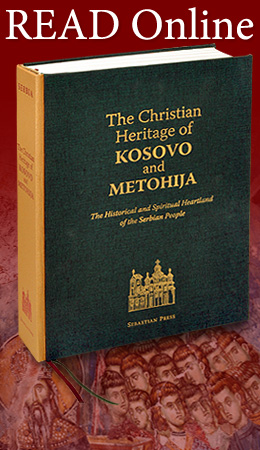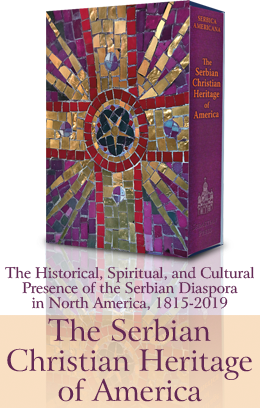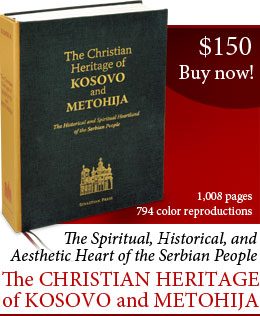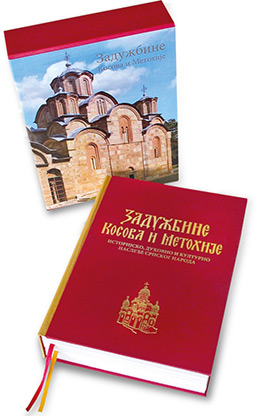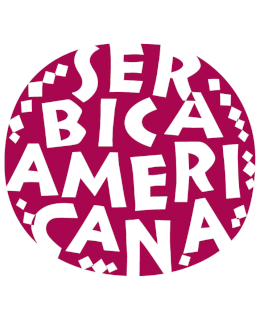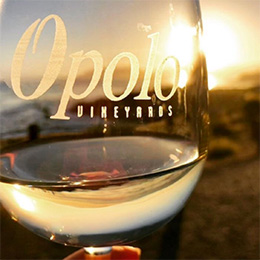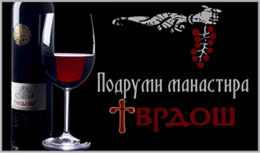by VESELIN KESICH
A paper read at the meeting of the Holy Cross Greek Orthodox Alumni Association, Brookline, Massachusetts
The spirit of any particular national church is manifested above all in its saints, as well as in the work and writings of its most outstanding leaders. Therefore we shall devote this paper to those shepherds of the Serbian Orthodox Church who in their lifetimes were immersed in the spirit of universal Christianity and at the same time served in their local churches as witnesses and martyrs of Christ. We shall select a few of them; those who filled their time with Church work of lasting importance.
At the beginning of the history of the autocephalous Serbian Church, we have its greatest son, St. Sava (1173-1236). The history of this church starts really with him. As a young man, Rastko Nemanjich showed an inclination for a life of prayer and meditation. His father, Stevan Nemanja, was the founder of the Serbian state which sharply extended its boundaries and became an empire later on, in the fourteenth century under Tsar Dushan. Rastko left his father's home, went to Mount Athos, and became a monk, Sava, when he was eighteen years old. For the next sixteen years he lived the life of an ascetic and passed through the school of Orthodox spirituality at its very center, Mount Athos. There he transformed an abandoned monastery into a place for training and educating future spiritual leaders of the Serbian Church. This monastery, Hilandar, has performed just this role throughout centuries. At the end of his rule, Sava's father became a monk, joined his son, and died in Hilandar in 1900.
.Soon, eight years after his father's death, Sava wrote about his life, "The Life of St. Simeon," which was the monastic name of Nemanja. And with this biography, Sava produced the first original work in Serbian medieval literature. This life is written with force and simplicity. There is very little rhetoric and no miraculous elements at all. The "Life" expressed the sincere feeling of a son for his father, without restraint or hesitation. At the moment when his father died, Sava tells us that he prostrated himself and wept for many hours. Finally getting up, he thanked God for giving his father such a good end. Sava's work is the shortest, simplest, and most moving of the ancient Serbian biographies. The style and choice of expressions is best suited to convey the image of his father as Sava would have him remembered, without neglecting historical reality and following historical facts faithfully.
The times in which he worked were extremely turbulent and difficult. The crusades had established the Latin Kingdom in Constantinople. The Ecumenical Patriarch left his see and went to Nicea. There was a deep split between Sava's two brothers. One, Vukan, with the help of the Hungarian king and his army, forced the other brother, Stefan, to give up his throne. The new ruler, Vukan, now opened his court and country to Latin influences.
Stefan's supporters could not accept this change, and with the help of the Bulgarians they brought Stefan back to the throne. During Stevan Nemanja's lifetime he had been able to keep the conflicting groups under control; now with his death civil war broke out.
As a result of this struggle, there was doubt whether the Serbian people would remain in the family of the Eastern Orthodox Churches or come under the authority of the Roman Pontifex. Without animosity toward the Latin Church, Sava was profoundly convinced that the Eastern Orthodox tradition was the only basis for his people to retain their national and religious independence. To accomplish this goal, Sava had to fulfill two important tasks. First, he had to reconcile his brothers and bring peace to his people, and second, to persuade the Ecumenical Patriarch to make the Serbian Church independent, autocephalous.
To carry out the first task, Sava took the body of his father and brought it to Serbia. In the life of St. Simeon, he wrote that he had received a message from his brothers, Stefan and Vukan, to bring the relics of St. Simeon to Serbia because the Latin armies in the Fourth Crusade had captured Constantinople and one group of Crusaders had even reached Mount Athos.
Sava claimed that his brothers had expressed concern for the safety of their father's relics on Mt. Athos at this troubled time. Those who wrote the life of St. Sava, however, recorded that it was Stefan who asked Sava to come with the body of St. Simeon in order to strengthen his shaky position. Whatever the reason, Sava's most important act after his return from Mt. Athos was to reconcile Vukan and Stefan.[1] Sava does not link the trans-ferral of the body with the reconciliation of the brothers, probably because he hesitated out of humility to mention anything that might throw a favorable light upon himself.
There was also possibly an element of political judgment in Sava's omission of reference to the brothers' struggle. At the time when Sava wrote the life of his father, the event of the brothers' reconcilation had occurred quite recently. Thus any mention of this would have disturbed one or another group. The process of healing had not yet been finished, and the peaceful relations between brothers had to be strengthened and not weakened.
After he brought peace to his troubled land and spent considerable time on the Christianization of his people, Sava became the first archbishop of an autocephalous Serbian Church in 1219. He was elevated to this position by the ecumenical patriarch.
The principle of autocephaly had already been implicit in the work of the Greek brothers, Sts. Cyril and Methodios, who were active in the ninth century. St. Cyril knew all the sacred languages, and yet he did not impose them upon the Slavic people. Instead he composed a Slavic alphabet, thus creating the first literary language of the Slavs, Old Church Slavonic, and he translated into it selections from the Gospels and liturgical prayers. In his prologue to the Gospels, which consists of 109 verses, St. Cyril writes;
As without light there can be no joy—
For while the eye sees all of God's creation,
Still what is seen without light lacks beauty—
So it is with every soul lacking letters,
Ignorant of God's law,
The sacred law of the Scriptures,
The law that reveals God's paradise.
..................................................................
Hearing the Word in a foreign tongue,
As if you heard only the voice of a copper bell.[2]
With the preaching of the Gospel that the people could understand, there was a growing need for Church leaders who would care for the people and participate and share in their joys and sorrows The autocephalous church meant for St Sava a new responsibility, service and privilege The goal of his mission was to Christianize the way of life and the way of thinking of his people, and to prepare them for the future Sava interpreted this independence of the Church to mean not separation or isolation from other Eastern Churches but the recognition that the Serbian Church is one with them, and in the words of Bishop Nicholai Sava "wanted, only through the national organized Church, to make his people a worthy member of the universal Orthodox family of Christ He himself was permeated with the spirit of ecumenical Christianity As such, he felt at home in every Orthodox community of every race and language"[3]
In organizing the Church in Serbia, St Sava did not persecute anybody or attack any other religious group. His father had persecuted the Bogomils and burned their books, thus destroying potentially valuable records of the period. Sava never accepted the sword as a means for a solution of religious problems. He knew well that by persecuting the Bogomils, his father had not solved the problem nor had he overcome their anti-Christian teachings. As head of the Serbian Church he had to cope with the same problem, but he used a different method. Instead of persecution, he used persuasion, instead of simply rejecting their teaching, he showed what the Christian life should be like. Sava's tolerance and humility came from his faith and spirituality.
II
Without some knowledge of the work and person of St. Sava, we would have great difficulty in grasping the meaning and significance of the events that followed. Without the work that St. Sava had started, the people would not have had the faith and hope to endure and persevere throughout the long period of slavery. After St. Sava's death the Serbian Church grew and expanded. In the middle of the fourteenth century, it became a patriarchate, but at the end of this century tragedy struck the Serbian nation, and in the course of a hundred years, all Serbian regions were conquered by the Turks.
The central event in this period was the battle and defeat of Kosovo in 1389. The meaning of the defeat and the people's hope for the future found lasting expression in the Kosovo cycle of epic poetry. All the tragedy of Kosovo is vividly pictured in two poems: The Maiden of Kosovo and The Death of Jugovic's Mother. These poems express the dreams of the youth as well as the destruction of the life of the nation. And yet the spirit of the nation was still alive. The people who produced this poetry were able to see the inner meaning of the tragic event. They regarded Kosovo as analogous to Golgotha. The Serbian leader, Prince Lazar, who chose the heavenly kingdom and road that led to suffering, represented Christ of the Gospel passion narrative:
Mighty God, what now shall my choice be? Shall I choose to have a heavenly kingdom? Shall I choose to have an earthly kingdom? If I now should choose an earthly kingdom, Lo, an earthly kingdom is but fleeting, But God's kingdom shall endure forever. And the Tsar he chose a heavenly Kingdom.
The choice was made. The suffering of the nation therefore was not a consequence of historical necessity to which man must succumb, but it was the outcome of the choice, and itsmeaning is seen only in the light of the death and resurrection of Christ. Kosovo is the nation's Golgotha, and the poet goes beyond defeat and perceives the glory of the future.
In epic poetry the supper that Lazar gave at the eve of the battle corresponds to the Lord's supper, and Vuk Brankovich, who according to the epic poetry deserted his leader on Kosovo, points to Judas in the Gospel narrative. The greatest hero of the Kosovo cycle is MiloshObilich, who, by slaying the Sultan, sacrificed himself, thus removing any suspicion that he might be disloyal to Lazar, and he proved his faithfulness and cleansed his honor. In a sense his role is parallel to Peter's in the Gospels.
The New Testament theme is not imposed artificially upon this poetry. The parallels between the New Testament and the Kosovo cycle that we have indicated are not obvious to all listeners. Once we are immersed in the atmosphere and spirit that permeates this poetry, then we come to appreciate this parallel as a creative interpretation of historical happenings, which are thereby lifted from one level of existence to another, higher level, and which the Christianized mind and heart of the people see only in the perspective of the supreme sacrifice on Golgotha. An historical event has been transformed into a symbol, linking the two worlds, heavenly and earthly. The actuality of earthly events is not minimized here but is seen in a new light.
Why do we deal with poetry in a lecture on Serbian church history? For the simple reason that this history cannot be fully understood without taking into account the influence of this poetry on the Serbian people. They lived by it, and they saw in this poetry unforgettable portraits of men and women, of people with ideals and high morality. Through this poetry they absorbed what is best and purest in their past. It sustained them, giving meaning to their suffering, for suffering without meaning can be the most destructive power in the life of men and of nations. Having found meaning in suffering, the people never yielded to despair. Their hope opened to them a vision of the future. Removed from historical happenings by conquest, they still lived in history, in the past as well as in the future. Gathered together around the bard and his gusle, a simple instrument with a single strand of horsehair, they attentively listened to tales about those men of glory and once again were confirmed in their belief that
"All was done with honor, all was holy, God's will was fulfilled upon Kosovo." They lived in the world of epic poetry while at the same time suffering from the world that came into existence with the Turkish conquest and slavery.
Life in slavery, particularly in the sixteenth and seventeenth centuries, was very grim and gory. Various merchants from Asia Minor used to visit the conquered Serbian territory to buy slaves. The Turks would sell them men and women. A healthy and attractive Serbian girl would be sold to these merchants for a pair of shoes. For almost two hundred years Serbian children would be taken from their homes to serve the Sultan as Janissaries. Their names would be changed and their religion would be Islam. Many of them forgot the place of their origin. One of the best known of these Serbian boys who was taken away and later played an important role in the Turkish Empire was Mehmed Pasha Sokolovich. According to some accounts, he was taken by the Turks from the monastery of Mileshevo, where St. Sava's tomb was. He learned to read and write in this monastery. Ivo Andric, the Yugoslav Nobel Prize writer, in his book The Bridge on the Drina gives a dramatic account of how the Turks took Serbian children and how their mothers suffered because of this tribute in blood:
The mothers were especially persistent and hard to restrain. Some would rush forward not looking where they were going, with bare breasts and dishevelled hair, forgetting everything about them, wailing and lamenting as at a burial, while others almost out of their minds moaned as if their wombs were being torn by birthpangs, and blinded with tears ran right onto the horsemen's whips and replied to every blow with the fruitless question: 'Where are you taking him? Why are you taking him from me?' Some tried to speak clearly to their children and to give them some last part of themselves, as much as might be said in a couple words, some recommendation or advice for the way... 'Rade, my son, don't forget your mother.'
On that November day in one of those countless panniers a dark-skinned boy of about ten years old from the mountain village of Sokolovici sat silent and looked about him with dry eyes... What this boy in the pannier was later to become has been told in all histories in all languages and is better known in the world outside than it is amongst us. In time he becamea young and brave officer at the Sultan's court, then Great Admiral of the Fleet, then Sultan's son-in-law, a general and statesman of world renown, Mehmed Pasha Sokolli, who waged wars that were for the most part victorious on three continents and extended the frontiers of the Ottoman Empire, making it safe abroad and by good administration consolidated it from within. For these sixty odd years he served three Sultans, experienced both good and evil as only rare and chosen persons may experience them, and raised himself to heights of power and authority unknown to us, which few men reach and few men keep.
The life of this Islamic leader influenced the history of the Serbian Church, for in 1557, the patriarchate of the Serbian Church, which had been abolished with the Turkish conquest, was now suddenly restored. The new patriarch was none other than MakarijeSokolovich, a Serbian monk from Hilandar and the brother of the Prime Minister of the Ottoman Empire. More than four centuries separate us from this unusual event. The question of why Mehmed Pasha wanted the restoration of the Serbian patriarchate has not yet been answered satisfactorily. Some recognized historians think that Mehmed Pasha never forgot the place of his origin, that in secret he was a Serbian patriot and for this reason helped the Serbian Church to regain the right to manage church property, to confess its faith freely, to appoint new bishops, and to deal with marriages whenever Serbs were involved. The Serbian patriarchate was a small state within the empire. There are other historians, as might be expected, who are in total disagreement with the Serbian patriot theory. They regard the restoration of the patriarchate not as a result of Mehmed Pasha's attachment to his people but as caused by practical need. The Serbs represented a significant segment of population in the Turkish Empire, and those of the leaders who were dreaming of further conquests in the north and west wanted to have a peaceful population behind their advancing armies. Whatever the reason, the fact cannot be changed that in a crucial period for Serbian existence in the sixteenth century, when the people and the church were living in utter humiliation and poverty, when they had no rights, at that moment a powerful statesman worked to bestow upon the Church certain privileges which were essential for its survival as well as for the survival of the nation, and brought his brother, a Serbian archimandrite, from Hilandar to the throne of the patriarchs at Pech. The church was the only institution which survived the collapse of the Serbian Empire, and only the church could give the people hope for the future and a unifying principle.
Now that they had their own patriarch and bishops, the people dreamed more than ever about their freedom and the Kosovo heroes. They supported any movement from inside and outside that might bring them to their desired goals. But these many attempts were doomed. The Turks would liquidate the leaders of these revolts in various gruesome ways, as well as those who tried to come into contact with the outside world. Finally in 1766 the Pech Patriarchate was abolished, the unity of the Serbian Church was broken, and the churches in various Serbian regions followed separate roads. They would have to fight and wait for 154 years to be united again. This occurred only after the first World War, in 1920.
III
After the Serbian Patriarchate was abolished in 1766, the Church in Montenegro became independent. Contrary to popular view and the epic tradition, this mountainous region of Crna Gora was not continuously free from Turkish occupation. The Turks occupied the territory from 1499 to 1684, but even then there was some local autonomy. From the end of the seventeenth century, the bishops of Montenegro, who were also its rulers, came from the family of Petrovich-Njegosh. The greatest Serbian poet came from this family. He was Peter II Petrovich-Njegosh (1813-1851). Although his major work has been translated into European languages, including English, his poetry is still waiting for a successful translator.
This poet and bishop and prince was the last in the line of prince-bishops. As a prince of Montenegro, Njegosh was obliged by tradition to become a monk in order to be consecrated bishop. He probably would have preferred the life of a shepherd and the beauty of nature and recitation of epic poetry to being prince-bishop and to ruling in Montenegro. He was very young when his dying uncle, the Metropolitan, selected him to be his successor. The boy asked his uncle what he should do. The metropolitan made an effort to raise himself up and from a sitting position on his bed looked at his young nephew and said: "I can't help you now. My last words to you are: Pray to God and keep good relations with Russia." This was the only advice he received, and after some preparation Njegosh became the prince-bishop when he was twenty years old. His consecration took place in Russia. When he became a monk and bishop Njegosh did not know much about the Church Fathers, but quite a lot about Serbian epic poetry, particularly the songs connected with Kosovo.
He was a poet with all his being. Seven days before his death at the age of thirty-eight, Njegosh wrote: "I am a lover of poetry. It has occupied me much. Ah, divine poetry, mysterious spark." With his poetry, however, Njegosh accomplished more toward the social cohesion of his people than he would have achieved with any coercive measures. His people disliked any law, and Njegosh with his poetry kept them together and called them to heroism and moral perfection. Njegosh lived in the tradition of Kosovo. Milosh Obilich was more than a hero for him. He was the "miracle of heroism," a kind of divine principle, the defender of truth and justice. In contrast, Njegosh regarded Vuk Brankovich, who had betrayed Prince Lazar, as an evil principle. By killing the Sultan in the field of Kosovo, Obilich shows that he has power over evil.
Njegosh was not a bishop by vocation. He attended the church services only on the great feasts and when he had to ordain deacons and priests. His poetry on the other hand, shows that he was a profoundly religious man. This does not mean that he followed the Church doctrines in his poetry. Sometimes we find evidence to the contrary. In his philosophical poem Rays of Microcosm, which has been compared with Milton's Paradise Lost, Njegosh's Adam is not Milton's Adam, nor is he the Adam of Scriptures nor of church tradition. For Njegosh he is a fallen angel who had lived in heaven, took part in Satan's revolt, and then was thrown upon the earth. This is not a new story, Njegosh's creation. He borrowed his plot, but Njegosh like any great poet "transformed and expressed it in his own manner... proceeding from existing motifs, developing these in conformity with his own views and inspiration."[4]
Nobody has written so well and expressed so clearly Njegosh's religious view as the twentieth century religious leader, Nicholai Velimirovich, whose work we shall discuss later, but who, as a young monk, gave the most brilliant literary analysis of Njegosh's religion. To Nicholai, the great poet of Montenegro was not a pious man but he was a religious man in a higher sense of the word. Njegosh felt a need for a constant spiritual communion with God. He was preoccupied with universal questions and the mystery of the universe, and he could not live without these problems. The idea of the enlightenment, that if men would use more of their common sense, reason, and will, they could transform this earth into a paradise, is contrary to Njegosh's tragic sense of life. Bishop Nicholai stresses that Njegosh's poetry is not for the very young. When we start to feel and understand "that everything in our life does not depend upon reason and good will, that we are not absolute masters of our destiny . .. when we sense the universe above us and the heavy pressure of 'silent heavens'," then we begin to cherish Njegosh.[5]
Njegosh opened his last 'testament' with the following introduction: "Thanks be to thee O Lord, for having graciously granted to bring me to the shore of this world of thine and for having been pleased to nourish me in the rays of this wondrous sun of thine... From my childhood up as often as thin unattainable majesty has moved me to hymns of divine rapture and awe before thy great beauty, so often have I beheld in horror and bewailed men's wretched lot. Thy word has created all from nothing. To thy law are all things subject. Man is mortal and must die."[6] In this short introduction to his "testament" Njegosh summarized his religion.
IV
Between the two world wars, after 1920, when the Serbian patriarchate was reestablished and united all the Serbian regional churches, and until Yugoslavia's involvement in the second World War (1941), the most influential and the most productive figure in Serbian Church life was Bishop Nicholai Velimirovich. The village in Serbia where he was born in 1880 had a symbolic significance for him. There, in an extended family, he performed his first duty as a shepherd. He was taken from his sheep to school. Educated in Belgrade, Oxford, England and Berne, Switzerland, he never ceased to be the shepherd, and as Bishop of Ohrida, Bitolj, and Zica he took good care of his flock. At the most critical moments his flock wanted his leadership and listened to his voice. He spoke and wrote for intellectuals and simple people, old and young. His unusual strength and influence came from his intimate knowledge and participation in the national and religious life of the people, as well as from a profound grasp of the Orthodox mission in the world. Bishop Nicholai was a man of powerful intellect, who had been trained in some of the best modern universities, but above all in Christian learning and spirituality.
His literary output, books, articles, sermons, missionary letters, was enormous. With his essay on Njegosh's religion, he entered the history of Serbian literature. In his book, The Universe as Symbols and Signs, he offers an interpretation of the mysticism of the Eastern Church, and in such books as Harvest of the Lord he displays an intimate knowledge of the Bible and meditation upon it. Like St. John Chrysostom he used to warn his people that a Christian without knowledge of the Bible is like a workman without his tool, like a man who lives in darkness although the light is given to him. "Ignorance of the Holy scripture is self-treason," he warned, quoting St. Epiphanios of Cyprus. His Life of St. Sava in many places reveals as much about the author of the book as it does of his subject. He lives in the spirit of St. Sava's universal orthodoxy. We have mentioned only three of his books, for they are readily available and all three were written in America, where he came in 1946 after he was released from Dachau Prison Camp.
Bishop Nicholai became the leader of the popular religious movement that was spreading rapidly and widely through the villages of Serbia after the first World War. Those who belonged to this religious awakening were known as Bogomoljci ("those who pray to God")- These people used to attend church services regularly and were particularly happy if the Gospel was read in the vernacular, in Serbian instead of Old Church Slavonic. They also expressed a strong desire to hear the priests preaching on the Gospel. If there was no sermon, they regarded the liturgy as not quite complete, and they would often gather together after the church service to listen to one of their own lay preachers. This they regarded as a supplement to the service and it occurred either immediately after the liturgy in the vicinity of the church or in private homes. Some of them read the New Testament daily, and others added the Old Testament to their reading as well. They would meet in private homes toread the New Testament, and sing the Psalms and other religious songs.[7]
As we would expect there were priests who were unfriendly to the movement. It was not their custom to preach in their churches, and they did not like these lay preachers. There were also fears that sectarian influences might be reaching the faithful through the Bogomoljci. Due to all this, many priests were suspicious of this new way of religious expression and started criticizing outside preachers and those who followed them. The situation became more and more critical. Unjust criticism could have created barriers between the church and the movement. At this decisive point, a powerful personality, a new bishop, Nicholai Velimirovich, entered the scene and changed these potential tensions into a fruitful cooperation between the Bogomoljci and the local church leaders. He published an article called "Do Not Reject Them."[8] In well chosen words, he directly attacked "our inertia." He pointed out that the Bogomoljci came to church in a state of expectancy, and for this, Bishop Nicholai declared, we must be grateful. He exhorted the priests to preach more often and to be more active in performing their Christian duties. Nobody should throw stones at these pious people, for in doing so we may hit Christ himself. By putting the movement in the proper perspective and associating himself with it, Bishop Nicholai changed the atmosphere and prepared the basis for a more alive religious life in Serbia. He recognized the need to find a religious press and he encouraged a monastic revival. The new monks took an active part in the Bogomoljci movement. Many of the them came from this group of the pious people. The bishop organized missionary courses for the Bogomoljci and devoted his enormous talents and energy to the people. Among his numerous writings are missionary letters on the spiritual life. In one of these he deals with a problem that is so difficult for us to approach, the problem of death and tragedy. To a mother whose son was killed in battle and who looked for her son in all military cemeteries but could not find his grave, the bishop addressed the following words of consolation:
If your son is hidden from you, he is not hidden from God. The location of many graves of great and holy people is also unknown... The graves of many of Christ's apostles and martyrs, of many desert fathers and ascetics. We glorify their memory, we build churches in their names, to them we address our prayers. But we do not know their graves. Do not grieve because your son's grave is known only to God, just as are the graves of so many saints.
Then he tells her a story of another mother whose son was buried somewhere far away. It was impossible for her to go there and visit her son's grave, but each Saturday she would visit a nearby military cemetery, where there are graves of many whose mothers cannot visit them, and "on these graves she lights candles and whispers a prayer." Then the bishop concludes his letter: "Stop your weeping also and begin to do works of mercy for the repose of your son's soul... Don't separate your prayer from works of mercy, and blessed comfort from heavenwill descend into your heart, just like dew on the thirsty grass."[9] The Second World War broke out and all these activities stopped. Nicholai was arrested, and at the end sent to the concentration camp at Dachau. Although he came to the United States after the war weakened by his long confinement, he immediately started his work, which the war had interrupted. He wrote, preached, taught and had time for everyone who came to see and speak with him. Among his last projects were the Serbian Bible Institute, which published several of his small tracts, and a book on the life of Christ, which he did not complete. Twenty short chapters of the book have been published under the title of Jedini Chovekoljubac (The only lover of man).[10] These twenty chapters are really twenty well-rounded, beautifully written homilies. Bishop Nicholai wrote them in the spirit of the Fathers. The ancient homilies were Biblical commentaries, in which theology and spirituality were intertwined and expressed. In this sense, we should define the chapters of this book. In it, Bishop Nicholai enables us to know the mind of Christ as He reveals the mind of God to man. This is precisely what "spirituality" meant for the Church Fathers.
Bishop Nicholai was born in Serbia and died in the United States; Bishop Varnava Nastich, with whom we shall bring this paper to a close, was born in the United States in 1914 and died in Yugoslavia in 1964. As a boy of nine, he moved with his family to the country of his father's origin. There are still Serbs in Gary, Indiana, where he was born, who remember him well as an altar boy and as one who knew hundreds of verses of Serbian poetry by heart. The family settled in Sarajevo in Bosnia. The future bishop studied theology at Belgrade University and he took monastic vows just before the Second World War in the monastery of Mileshevo, where for centuries the body of St. Sava had rested before it was burned by the Turks in 1596. By this the Turks hoped to destroy the cult of St. Sava among the Serbian people. In 1940, Varnava wrote in a letter: "I became a monk in the monastery of Mileshevo, the monastery in which the remains of the greatest Serbian Saint and the greatest Serbian monk, St. Sava, for centuries rested. That fills my being with a mystic stream... Oh, how majestic that feeling is! To become worthy of it a man must give everything of himself."
The place of Bishop Varnava in the life of the Serbian Orthodox Church cannot be understood or separated from the events following the collapse of Yugoslavia in 1941. The city of Sarajevo and the provinces of Bosnia and Hercegovina were incorporated into the Independent Croatian State. With the blessings of Nazi Germany and Fascist Italy, the power of life and death was given to an extreme totalitarian group, already known before the war for its violent acts. This group called themselves Ustashi (those able to raise arms), and their leader (poglavnik) was Ante Pavelic. They planned to rule a state that was purely Croatian, but within their borders lived about 2,300,000 people of Serbian origin. They undertook to "solve" the Serbian problem. Blinded by hatred of the Serbs and their church, the Ustashi inaugurated a "final solution" for its large Serbian population, a public reign of terror. Among the first victims of this new policy were the Serbian bishops and priests. The churches were used as slaughter houses. Here the people were killed or burned alive. In some of these churches, Serbian girls were raped and then liquidated. According to conservative estimates, about 750,000 Serbs in the independent Croatian state were murdered. Of the 577 Orthodox priests who were active in parishes in this area before the Second World War, 217 were killed and 334 were forcibly deported to Serbia. The remainder were either in German prisoner-of-war camps or joined the resistance in the forests.[11] In this atmosphere of ultimate terror, those still alive were asked to join the Roman Catholic Church. There is no doubt that the power of the sword was behind this conversion. Some were "converted," but after the war they returned to their mother church.
This persecution continued at full intensity through 1941 and 1942. Then the leaders of the Ustashi state realized that the Serbian problem could not be solved by terror, for the masses of the people still resisted conversion. Although they were without protection, living under the most humiliating condition, they could not accept sheer physical survival at the price of their dignity. Due to this resistance, in 1942, Ante Pavelic declared the formation of an independent Croatian Orthodox Church. A Russian metropolitan, Germogen, who had come to Yugoslavia after the Revolution, agreed to be its leader. The Synod of the Serbian Church in Belgrade rejected the new church as noncanonical and condemned Germogen for accepting the position. The Synod of the Russian Church in Karlovci removed Germogen from its episcopate.
The Croatian Orthodox Church had no success. An insignificant number of priests and people supported it. Therefore Pavelic decided to appoint a man of Serbian origin as the leader of his new church. Varnava Nastich had somehow survived the terror of the previous years. In 1944, he was invited to meet Pavelic, who asked him to accept the leadership of the Croatian Orthodox Church. Some of Varnava's friends urged him to accept, because they regarded Pavelic's offer as a God-sent opportunity for saving the lives of many unfortunate Serbs in the Croatian state. They argued that the war was almost over and that he should humble himself for a short time to save some lives. Varnava was tempted, but he responded that the good he could do to his people "we can never do at the cost of their dignity—much less at the cost of God's principles."[12]
Healso been in Dachau, the Serbian Church made a serious effort had made his decision, but he still had to confront the all-powerful Pavelic. When the meeting with the "new Herod" occurred, Varnava spoke about the meaning of his monastic vows, renouncing the glory of this world. After this introduction he addressed Pavelic directly: "You ask me to become a bishop of a so-called church, which means to become a traitor to both Christ and the Serbian people. What good could you have from a traitor?" Despite this defiance, Varnava survived, and Pavelic's state collapsed with the end of the war.
With the return of Patriarch Gavrilo, who had to organize the broken life of its parishes and dioceses. For this purpose new bishops were consecrated for the vacant sees, one of whomwas the monk VarnavaNastich. In his First sermon as bishop, Varnava revealed what kind of bishop he would be.[13] He saw his elevation as an act that would lead inevitably to suffering:
Everything that I could say and the most I could say, that I will joyfully ascend my Golgotha, and that honor I will never exchange for any other honor under God's sun.
He said real honor is inseparable from sacrifice. He continued:
Although I know the weaknesses of my soul, I am not afraid that my legs will tremble on the thorny path of Golgotha on which today I am set out... [and] if they wanted to tremble... the countless examples of Christ's heroes would restore to them confidence and given them strength.
He could not finish his sermon without a reference to the tragic event of Kosovo. After exhorting the faithful to arm themselves spiritually, to be ready for the struggle with the "spirits of evil" and not "against any political party of the world," he adds: "You shall win this war only by the weapons of sacrifices. Don't forget that you are the offspring of the Prince of Kosovo, who sacrificed the earthly to gain the heavenly."
Varnava was indeed prepared to be a martyr. Soon after this sermon, delivered in 1947, Varnava was brought to trial in 1948. He was accused of being an enemy of the new Yugoslav state, tried, found guilty and condemned to eleven years of hard labor. However, he was released by the Communist authorities in 1951 He died under suspicious circumstances in 1964.
In conclusion we should stress that these great church leaders lived and worked in critical and tragic periods in Serbian church history They were persons of different talents and came from different family backgrounds. But all of them were Christian monks. All of them were deeply rooted in the tradition of their people. By opposing the disruptive and pagan forces of their times, they understood that the power of Christianity was not in destruction but in the transformation of life. They filled their times with decisive events Faithful to God and His gospel, their concern was the salvation of their flock. The following words of St. Sava to his contemporaries may be applied to all others also "I ask nothing from you I want the salvation of your souls, and for the sake of your salvation I disregard my own soul".
Copyright: The Greek Orthodox Theological Review, Boston MA
---
[1] Djoko Slijepchevich, Istorija srpske pravoslavne crkve I (Munich, 1962) '69 ff.
[2] Roman Jakobson, "St Constantine's Prologue to the Gospel," St Vladimir’s Seminary Quarterly, 7 (1963), 17f.
[3] Bishop Nicholai D Velimirovich, The Life of Saint Sava (Libertyville, 111 ,1951), p. 192.
[4] Milovan Djilas, Njegosh, Intro, and trans. Michael B. Petrovich (New York 1966), p. 268.
[5] Nicholai Velimirovich, Religia Njegosheva (Belgrade, 1921), pp. xi-xiii.
[6] Quoted in Djilas, Njegosh, p. 431.
[7] For a good account of the main characteristics of the Bogomoljci movement, see Episkop Chrizostom, "Narodna Hriscanska zajednica," Srpska pravoslavna crkva, 1920-1970. (Belgrade, 1971), pp. 345-62. This book, published by the Synod of the Serbian Orthodox Church, is indispensable for those interested in Church life from World War I to the present.
[8] A central part of this article is printed in Episkop Chrizostom, Srpska pravoslavna crkva, p. 349.
[9] From an unpublished translation of Bishop Nicholai's missionary letters by the Rev. James Doyle.
[10] Published in Serbian by Library Svechanik (Munich, 1958).
[11] For data, see Dushan Lj. Kazich, "Srpska Crkva u tzv. Nezavisnoj Drzavi u Hrvatskoj" in Srpska pravoslavna crkva, 1920-1970, pp. 196f.
[12] Bishop Varnava's account of his meeting with Pavelic was send to the Reader's Digest for publication but was not printed. This account, as well as letters to his relatives and friends in Gary, Ind., may be found in Thomas Kazich, "Bishop Varnava Nastich: Witness for Christ, 1914-1964," unpublished essay written for the Master of Divinity degree, St. Vladimir's Theological Seminary, Crestwood, N.Y., 1975.
[13] The sermon was translated by Rev. Firmilian Ocokoljic, now bishop and published in A Spiritual Hero of Our Time. The Serbian text appeared in Glasnik, the organ of the Serbian Orthodox Church, Belgrade, Sept. 1947, pp. 248-59.



